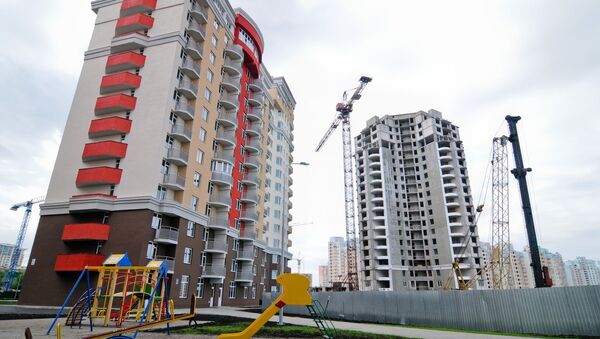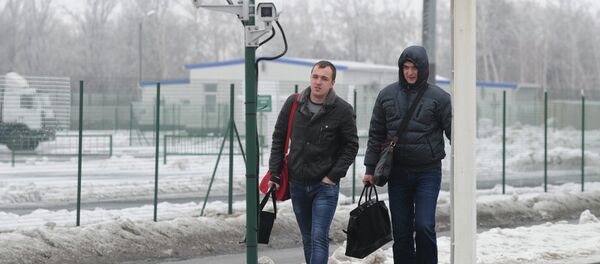With overall urban housing construction across the country falling by 2.1 percent in 2014 to 9,731,000 meters, a statistical report recently by Ukraine's State Statistics Service has found that the country's western-most provinces saw construction rise by their highest levels in over 20 years. Ivano-Frankivsk saw a 44.1 percent increase, Lviv 41.4 percent, Odessa 39.8 percent, Khmelnytskiy 21 percent, and Kiev 14 percent. Meanwhile, even excluding the war-torn regions of Donetsk and Luhansk (which have suffered a decline of 45.9 and 30.9 percent, respectively), many heavily populated eastern regions saw construction dive by double digits, Zaporizhzhya down 37.7 percent, Dnepropetrovsk 33 percent, Kherson 36.6 percent, and Kharkiv 28.2 percent. The complete 2014 housing construction statistics can be found here.
As Rosbalt points out, the 250,000 person region of Ivano-Frankivsk alone saw more building than the regions of Dnepropetrovsk, Kharkiv and Zaporizhzhya combined, the latter being home to more than eight million people.
While wealthy Kiev residents and easterners swept away by feelings of nationalism have been buying up housing in western Ukraine, the wealthiest have been leaving for Europe, North America and Israel, while the poorest, among them hundreds of thousands of young men, have escaped to Russia.
The war in eastern Ukraine and the threat of conscription, along with political tensions, and economic collapse, have resulted in the displacement of several million people across Ukraine. A UN report from last month estimated 633,000 to be internally displaced, as 1.4 million more people in the conflict zone remain vulnerable to hunger, cold, and lack of medicine. The UNHCR has reported that 830,000 refugees have left for Russia since last April, while Russian Security Council Secretary Nikolai Patrushev recently noted that about 2.5 million Ukrainians, including 1.3 million draft-eligible men, are presently living in Russia.
The civil conflict in eastern Ukraine is estimated to have cost the lives of over 6,500 people, with German intelligence recently estimating a much higher number of casualties – up to 50,000, since April 2014.





